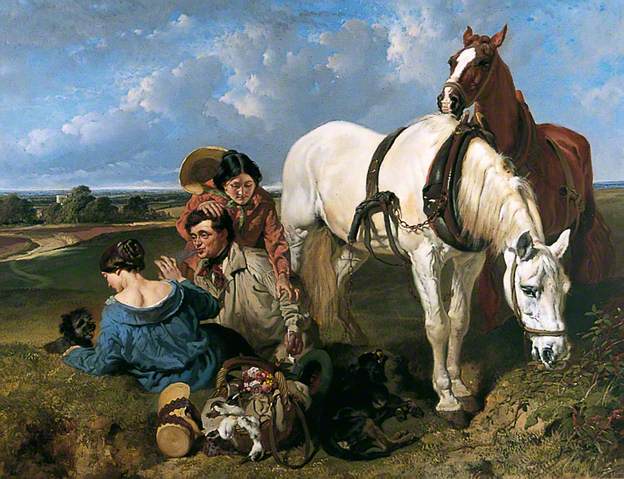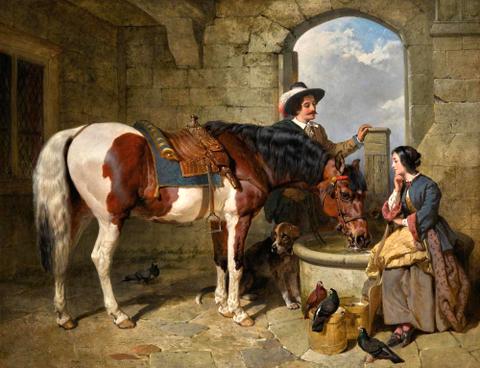HERRING, John Frederick (1795-1865)
John Frederick Herring was born in London on 12 September 1795, son of a London merchant of Dutch parentage, who had been born in America. The first eighteen years of Herring's life were spent in London, where his greatest interests were in drawing and in horses. In 1814, he moved to Doncaster in the north of England, arriving in time to witness the Duke of Hamilton's ‘William’ win the St Leger Stakes. By 1815, Herring had married Ann Harris and their sons, John Frederick Herring, Jr. (1815-1907), Charles Herring (1828-1856), and Benjamin Herring (1830-1871) were all to become artists, while his two daughters, Ann [Weir] and Emma, both married painters. At Doncaster, Herring was a painter of inn signs and insignia on the sides of coaches, and a contact with a firm owned by a Mr Wood, led to Herring's subsequent employment as a night coach driver on the 'Nelson' from Wakefield to Halifax and the 'Nightflyer' from London to York. Herring spent his spare time painting portraits of horses for inn parlours and became known as the ‘artist coachman’ and began painting hunters and racehorses for the gentry. In 1830 he left Doncaster for Six Mile Bottom, Newmarket, Suffolk, where he was living in 1837 before moving to London. During his time in Newmarket, Herring may have received tuition from Abraham Cooper (1787-1868). In London he experienced financial difficulties and was given financial assistance by china manufacturer William Taylor Copeland (1797-1868), who commissioned many paintings, including some designs used for his famous Spode bone china. On the invitation of the Duc d’Orleans, son of French King Louis-Phillipe, he visited Paris 1840-1841 painting several pictures and in 1845 was appointed Animal Painter to HRH the Duchess of Kent, to be followed by a commission from Queen Victoria, who remained a lifelong patron. In 1853 he moved to rural Kent when he then broadened his subject matter by painting agricultural scenes and narrative pictures, as well as his better-known sporting works of hunting, racing, and shooting. He spent the last twelve years of his life at Meopham Park, near Tonbridge, living as a country squire and his paintings were extremely popular, many being engraved, including his 33 winners of the St Leger and his 21 winners of the Derby. Herring exhibited at the Royal Academy 1818–1865, at the British Institution 1830–1865, and at the Society of British Artists 1836-1852, where Herring was elected Vice-President in 1842. John Frederick Herring died at Meopham Park, Tonbridge, Kent on 23 September 1865.
Royal Academy Exhibits
from 88 Newgate Street, London
1818 231 Portrait of a Dog
until
from 212 Piccadilly, London
1865 201 The Old Lodge
437 Horses Feeding
Works by This Artist

|
Barney, Leave the Girls AloneOil on canvas
|

|
The Watering PlaceOil on canvas
|